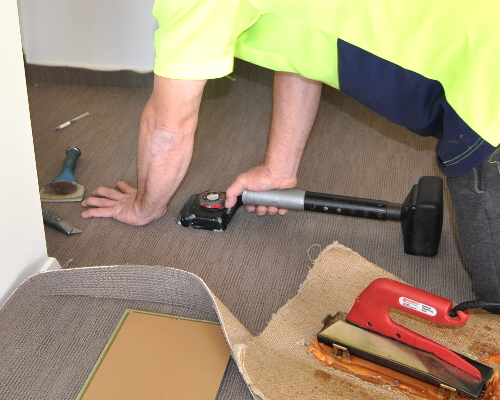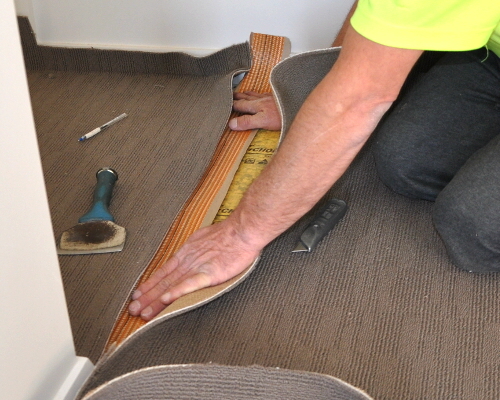Seaming the carpet
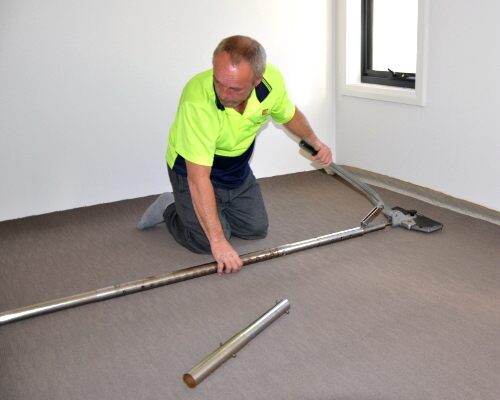 Audio for slide 1 (mp3 |6|KB)
Audio for slide 1 (mp3 |6|KB)
Set out below is the standard procedure for seaming tufted and bonded carpets with hot melt tape.
Note that tufted carpet must be pre-stretched before the edges are seamed.
This helps to ensure that when you finish the seams and do the final stretch, the carpet will take up evenly and stay that way over time.
See the next lesson - Stretching - for more details on the process.

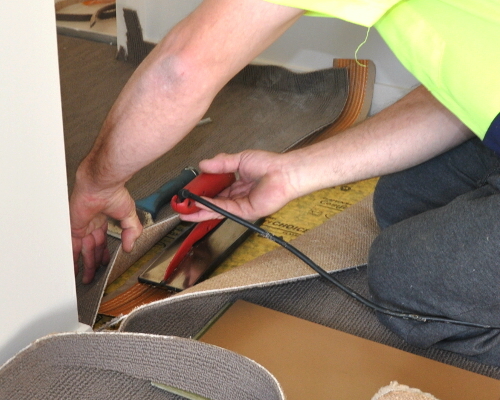 Audio for slide 4 (mp3 |6|KB)
Audio for slide 4 (mp3 |6|KB)
The general process is as follows.
- Set the heat regulator on the seaming iron to the lowest temperature that will achieve a full melt of the adhesive.
- Stretch the carpet lengthwise to remove buckles and slackness, and put in 'stay tacks' to hold the tension.
- Position the tape under the centre of the two edges of the seam. Put the iron under the carpet and on the tape. Make sure the heat shield is in place.

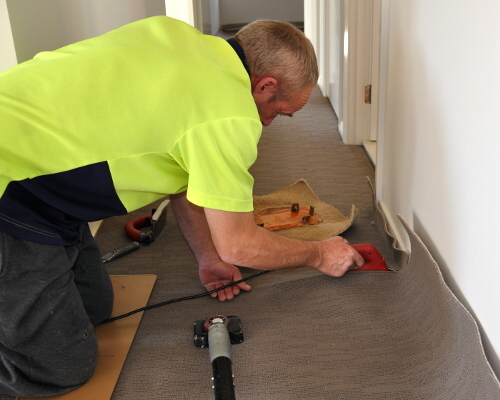 Audio for slide 5 (mp3 |6|KB)
Audio for slide 5 (mp3 |6|KB)
- Move the iron slowly in the direction of the pile lay, at about 600 mm per minute. Adjust the carpet seam immediately behind the iron as you go, before the adhesive cools.
- Press the two edges into the adhesive using a board. This will also help to flatten out the seam.
- Trim the loose yarns from the seam and remove the stay tacks.
- Roll the seam with a spiky roller if the carpet is loose pile construction. If it is cut pile carpet, you will need to use a cut pile roller so that you don't damage the yarn.

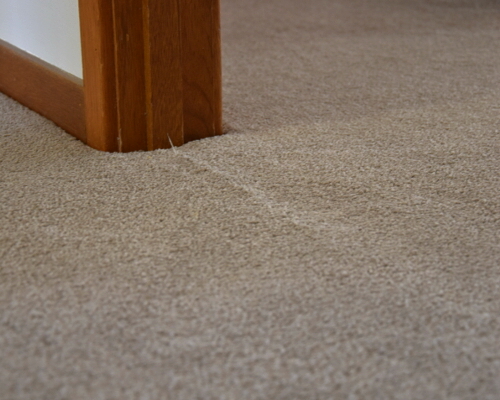 Audio for slide 6 (mp3 |6|KB)
Audio for slide 6 (mp3 |6|KB)
Once you power stretch the seams, there may be some degree of peaking.
Level loop pile carpet tends to show seams more than cut pile carpet, and heavier carpets peak more than lighter ones.
However, you can reduce the peaking by stretching the carpet tighter parallel to the seams and lightly across the seams.

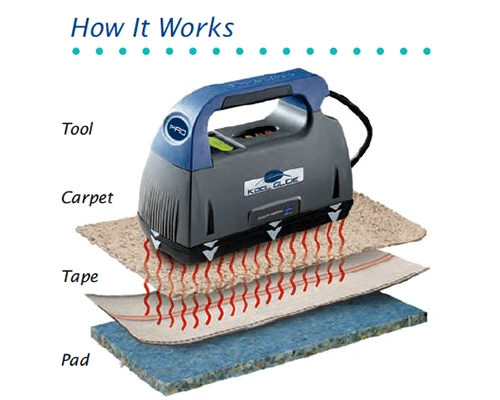 Audio for slide 7 (mp3 |6|KB)
Audio for slide 7 (mp3 |6|KB)
Using an induction heating system
A new method for heating seaming tape is to use an 'induction' heating tool.
This system was pioneered by Kool Glide, which brought the first induction seaming tool onto the market in 2004.
The tool works by 'inducing' an electric current in the hot melt tape by passing a magnetic field through the carpet and into the electrically conductive tape.
This melts the adhesive embedded in the tape without needing to apply any external heat.
One of the main advantages of this system is that there is no smoke and minimal vapours given off by the process, since the induction tool never comes into contact with the adhesive.
Another advantage is the ability to undo or repair a bond by re-heating the adhesive after it has already set.


Learning activity
Audio 8 (mp3 |6|KB)Have you used a seaming tool? If so, answer the questions below in relation to the tools you have used. If not, do some research and answer the questions on the basis of your findings.
- Give the brand name and manufacturer of the hot melt tape.
- Give the brand name and manufacturer of the tool used to melt the tape.
- Indicate which types of carpet these products have been designed for.






